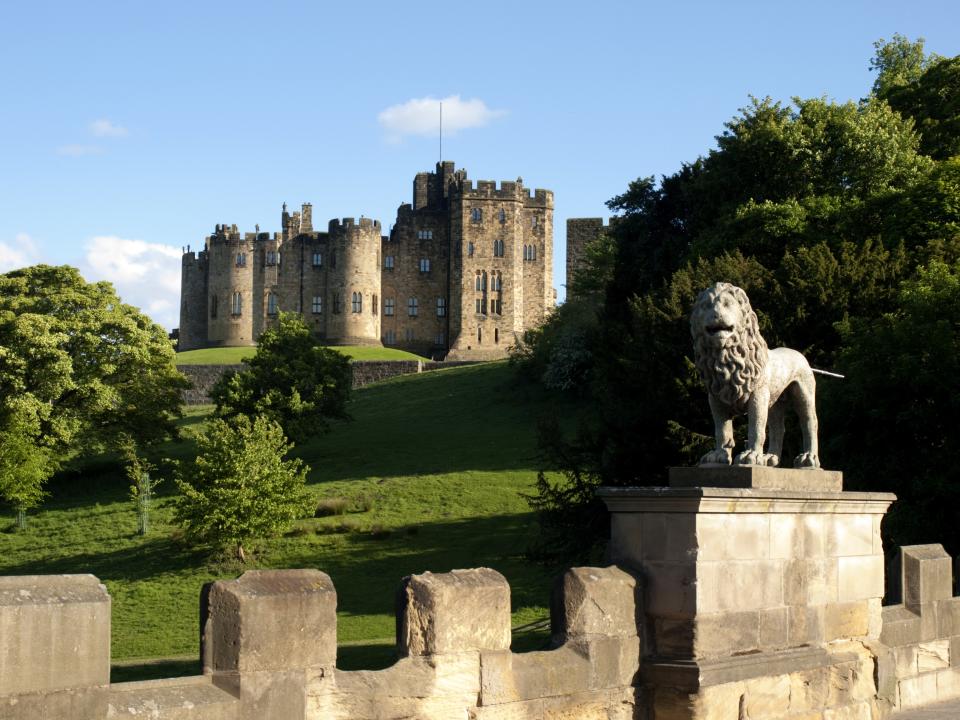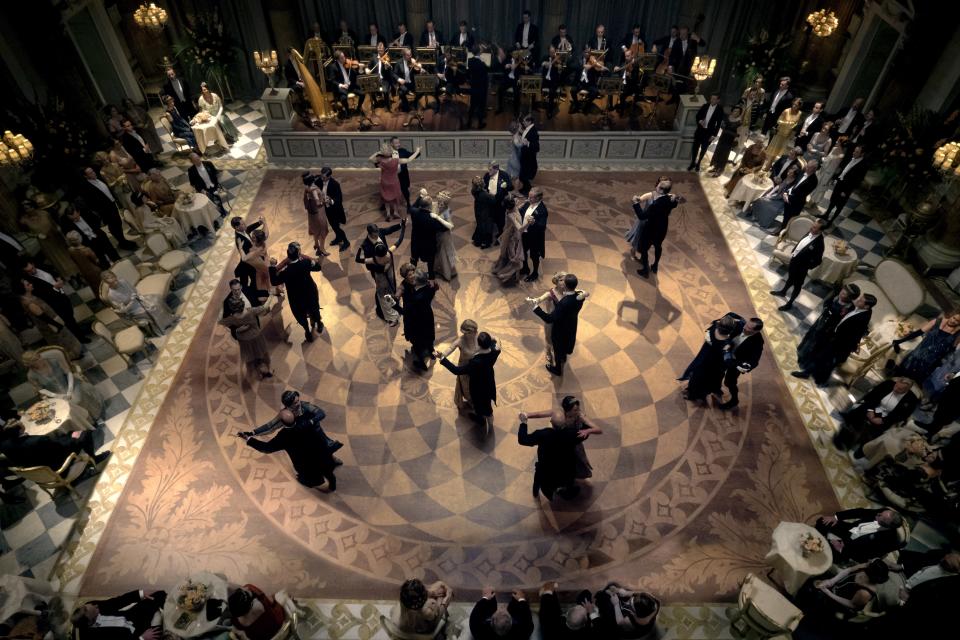Visit Downton Abbey ’s Most Beautiful Filming Locations
Downton Abbey, whose six seasons documented the exploits of the wealthy English Crawley family (and the staff who served them), certainly inspired many a new Anglophile. And while the dramatic story lines made for riveting television, the elaborate sets and stunning filming locales were themselves worth tuning in for. From the family’s elegant ancestral home—known as Highclere Castle in the real world—to the pastoral charm of farmhouses, the carefully chosen locations used in the series were certainly integral to its success.
The intrepid man responsible for finding these homes and spaces? Location manager Mark “Sparky” Ellis, who worked on both the series and the upcoming film. In advance of the movie, he and his crew spent 10 weeks crisscrossing England to scout the perfect castles and estates for such a grand production. “I think British tourism will be very grateful to us,” he laughs. Read on for five of Downton’s most beautiful locations, and catch the film Downtown Abbey in theaters on September 20.
Alnwick Castle

Alnwick Castle, Northumberland
Photo: Getty ImagesIts name pronounced “an-nick,” this Northumberland castle’s origins date all the way back to the Norman period. It is also the second-largest inhabited castle in all of the United Kingdom; the Percy family has lived here for more than 700 years. In Downton Abbey, Alnwick was renamed Brancaster Castle and was initially the home of Lady Rose’s father-in-law, Lord Sinderby. In a later season, Lady Edith’s fiancé Bertie Pelham has taken over ownership, and the castle serves as a meeting point for the two families. For Ellis, it remains one of his favorite filming locations. “Alnwick Castle is such a stunning house. It's a different level of historic building in the U.K.,” he says. To re-create these scenes, make a beeline for the elegant State Rooms, the castle’s ramparts, and Hulne Abbey in the Alnwick parklands.
Cogges Manor Farm

Cogges Manor House
Photo: Gary Ombler / Courtesy of Cogges Manor FarmThis historic farm encompasses a 13th-century manor house, 17th-century farm buildings, and an elegant walled garden. In Downton, the Oxfordshire complex became Yew Tree Farm and is featured heavily in seasons four and five as the home of the Drewe family, who (spoiler alert) raise Lady Edith’s child when she cannot. Both the manor house’s kitchen and the grounds were featured, and Cogges now runs regular Downton Abbey–themed tours. The farm can also attribute its higher profile to the series. “When we first discovered it, no one was going there,” Ellis says. “It was very much a quiet attraction just outside Oxford, but now it's a well-established tourist spot.”
Highclere Castle

DOWNTON ABBEY
Photo: Jaap Buitendijk / © 2019 Focus Features, LLCNo filming location, of course, is more heavily associated with the series than the estate that became Downton itself: Highclere Castle. The Jacobethan house, which sits on 500 acres in Hampshire, was actually near total collapse before the series began filming there, with at least 50 rooms deemed uninhabitable. After the estate rose to prominence from the series, however, increased tourism brought in enough money for owners Lord and Lady Carnarvon to embark on serious renovations. And as it's the central filming location, themed tours here abound. Luxury train Belmond British Pullman runs special themed journeys from London, while Viking Cruises offers special access tours for its river cruise guests. But diehard fans should book a trip through travel company Scott Dunn, which can even arrange for a private traditional afternoon tea in the home’s state dining room.
Harewood House
This stately home in Yorkshire is one of just 10 homes in England designated as treasure houses, which in practical terms means it’s exceptionally beautiful. Harewood had actually been on Ellis’s radar before the Downton Abbey series even began filming, but its location far from London took it out of the running for a recurring filming spot. But when scouting for the film, Ellis had it at the top of his list. “They welcomed us with open arms, and it’s a stunning location,” he says. And while Ellis couldn’t give too much away, it’s Harewood’s exteriors, plus the gallery, Cinnamon drawing room, and terraces that were used in the film.
Wentworth Woodhouse

DOWNTON ABBEY
Credit : Jaap Buitendijk / © 2019 Focus Features, LLCWith the longest façade of any country house in England, Wentworth Woodhouse is one of the most impressive estates in Britain. While it was built for the first Marquess of Rockingham around 1735, its history also includes stints as a camp for military intelligence during World War II and a polytechnic college. And while its exterior is breathtaking, it was actually its massive ballroom that attracted Ellis. In fact, Wentworth’s entertaining spaces actually stood in for those at Harewood, which proved to be too small for shooting. Take note if you’re visiting soon, though: That famous façade is covered in scaffolding for renovation work.
Originally Appeared on Architectural Digest
